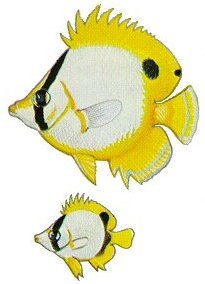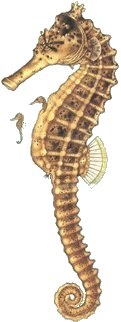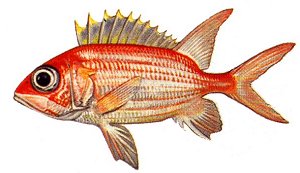Collecting Live Specimens


A different sort of hunting is "bring 'em home alive". An aquarium can be a fascinating way to observe and photograph marine life, especially when the weather or season is not conducive to diving. Freshwater aquariums are easier to set up and maintain, especially for the novice, and a number of the local species of Sunfish are as attractive as anything you can buy in a store.

Marine aquariums are more difficult but offer many more possibilities in what you can keep - the marine environment contains many types of invertebrates and fishes that are simply not present in freshwater, such as horseshoe crabs, starfish, anemones, urchins, and many more. Many of these creatures can simply be picked up at low tide. When collecting stinging creatures such as anemones, keep them in strict solitary confinement during transport, or they will sting everything else to death, including each other. Once established in an aquarium, they are not usually a problem, as the other critters quickly learn to stay away.

Some sort of specimen jar is essential when collecting like this. It is best to carry several, to avoid the need to return to shore every time you get something, and also to allow incompatible types to be separated. The best design I have come up with is made from a small, wide-mouthed clear plastic jar, the type fish food or peanut butter often comes in, or you can buy at K-Mart. A short piece of knotted string connects the lid to the jar, and terminates in a small brass snap, so you can clip it on. The lid slides on the string, and is drilled with flooding holes, but not the jar, except for one small hole near the top to attach the string from the inside. This is so that it will not drain when you exit the water. The string is just long enough to get the lid clear of the opening of the jar.
Most fish are more easily collected at high tide. This can be accomplished by wading with a seine or dip net, or by diving with a dip net or slurp gun. While the slurp gun is an appealing gadget, a good hand-net will work much better. The local fishes are simply much too wary and quick to be sucked up. Another advantage of a net is that it takes just one hand to operate, leaving the other free to hold a light or other task. Fine-mesh nets are best; coarse mesh nets damage delicate specimens and entangle spiny ones. Don't overlook the usefulness of a long-handled dip net. I have collected some of my best specimens while wading in my suit after a dive. Finally, if it is possible to collect a specimen without the use of a net, such as picking up a Pipefish in your fingers, or catching something directly in the specimen container, then this is preferable to using a net.
Catching anything with a hand net is difficult. It is much easier to hand-net small fishes underwater if there is a current running. This is because many of the small aquarium-sized fishes you are after are fairly weak swimmers, and in a current, it is often all they can do just to keep in place. This is especially true of most tropicals. Hunt around the protected leeward side of rocks, pilings, walls, and in holes and crevices where the fish will congregate seeking shelter. Flush them out into the open, and then use the current to trap them. At slack tide, when the water is still, these same fish will dart away from your net with frustrating ease. I would say the stronger the current the better, up to the point where you can no longer manage it yourself. Extra weight will help you hold bottom.

Hunting is much better at night when the daytime critters doze, and the nighttime critters come out. With either kind, shining your light on them will probably at least temporarily stun them. Using a net at night is difficult - it basically requires one more hand than most people have. Instead, you can dispense with the net entirely. You will need a dive light with a bezel that is at least as wide as your collecting jar. Place the light in front of your target, and the jar behind, and trap your quarry between, closing off the jar with the light. This has the additional advantage of illuminating the contents of the jar. If you got what you are after, pin the jar to your chest with the light, freeing one hand to slip the cap in place.
Don't overlook other means of capture. If you have a partner willing to get wet, a seine net is probably the best way to collect small fishes in shallow water. Round cast nets are more difficult to use, but can also produce interesting specimens, and do not require a second person, or even getting wet if you don't want to.
For transport home, keep incompatible species separate in small buckets, or just leave them in the jars. Anything that stings should be kept in isolation. Watch the temperature - heat is the greatest killer at this point.

A number of highly suitable baby tropical fish become available in late summer/fall in the rivers and inlets, and there are no regulations that I am aware of concerning their collection for any purpose. Many of the local species also make fascinating subjects, but before you collect them, check that it is legal. Although it may seem stupid, the same law that forbids a fisherman from keeping a 13" fluke also forbids you from taking a 3" one, even if you intend to provide it with only the best of care.
It is best to collect from shallow warm riverine environments, where the inhabitants are used to highly variable, even abusive conditions. These will do much better in an aquarium than specimens taken from the cold deep open ocean. However, high summer temperatures are too much for even most of these tough temperate types, so for their sake, it is best to keep them over the winter and release them in the spring, unless you plan to invest in an expensive aquarium chiller. Tropicals should do well year-round.
